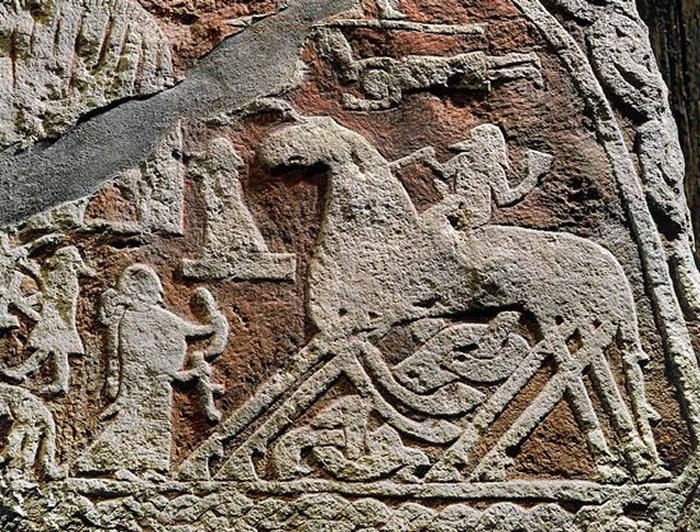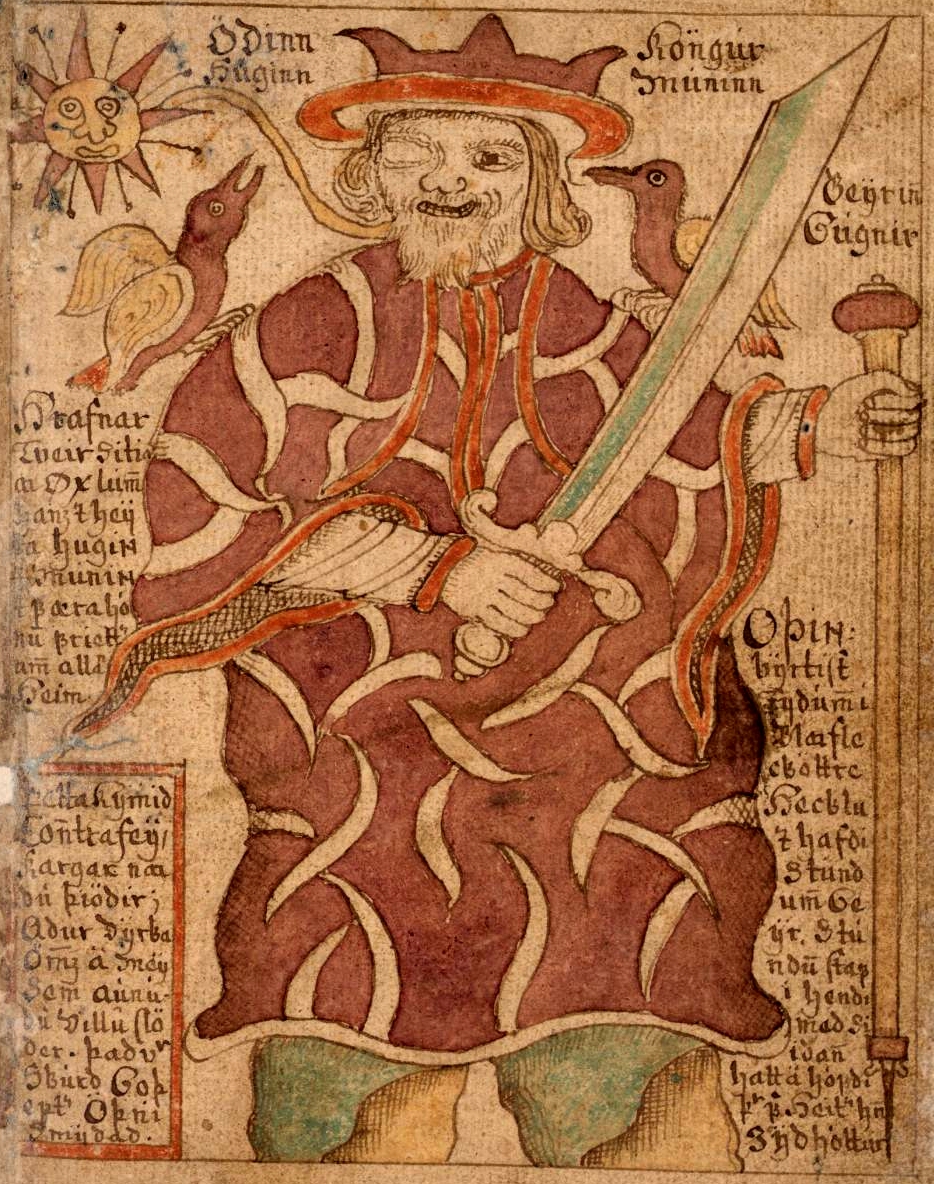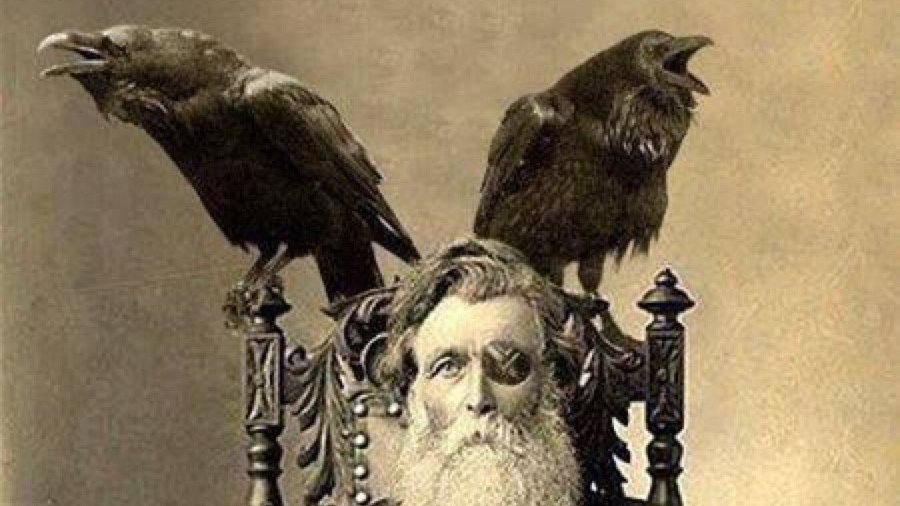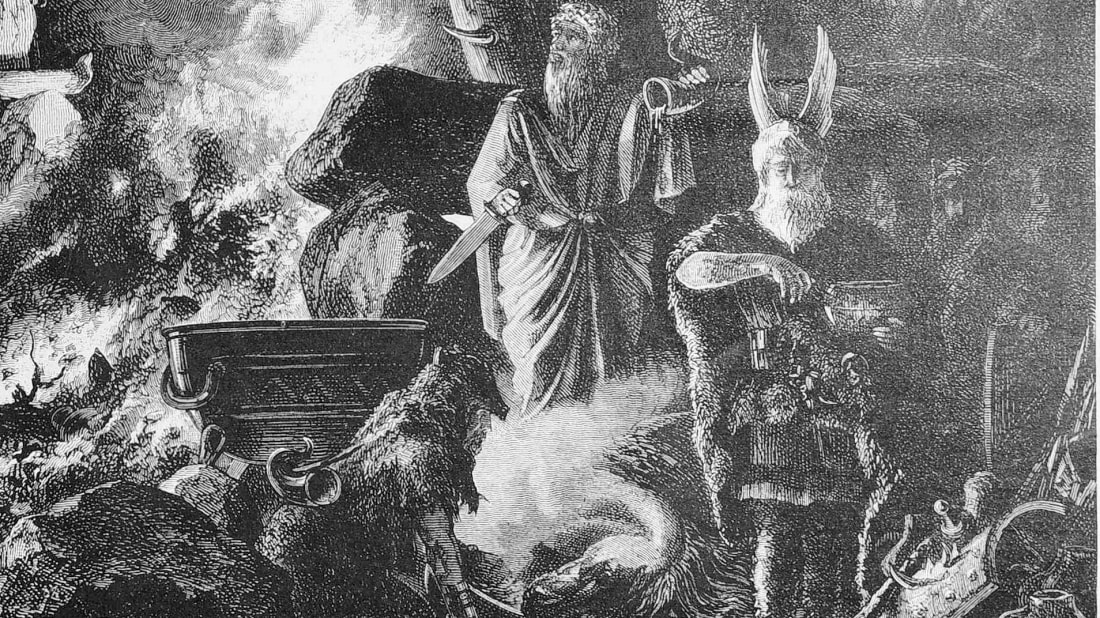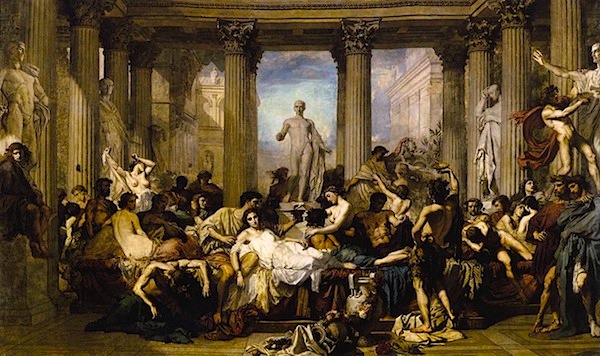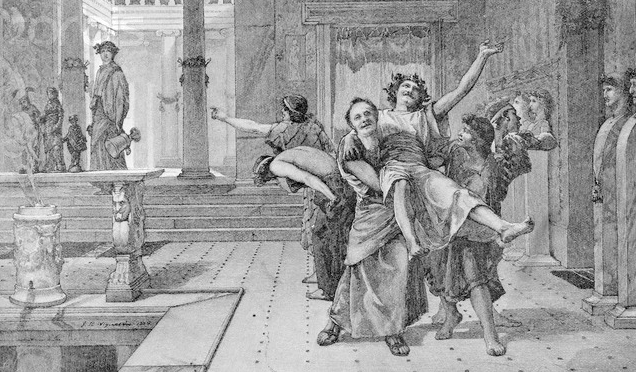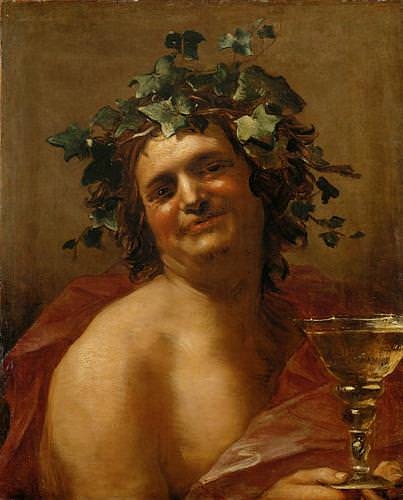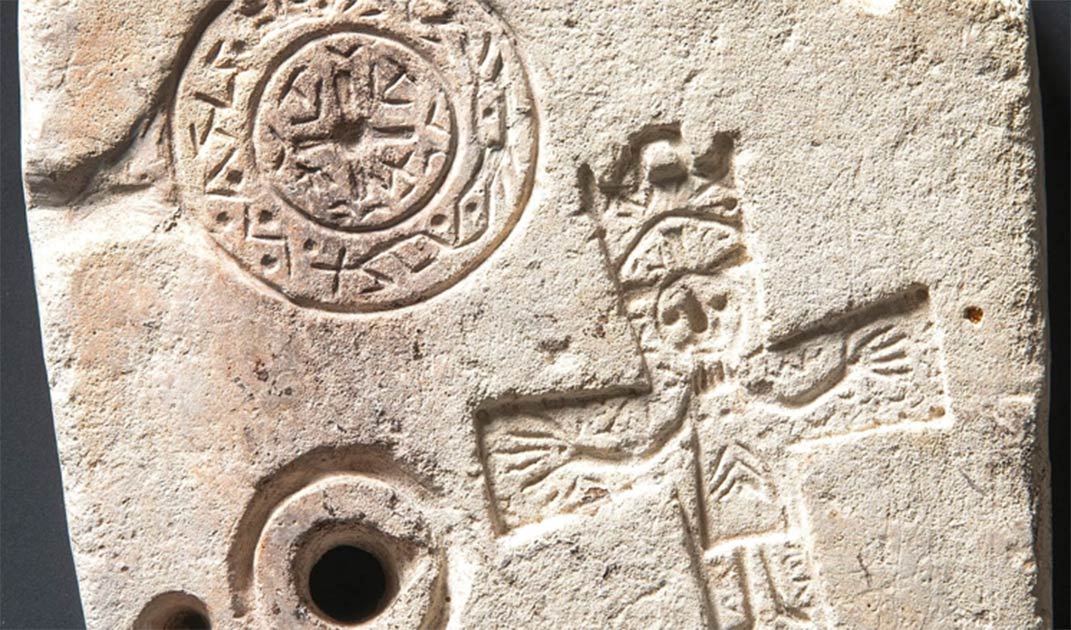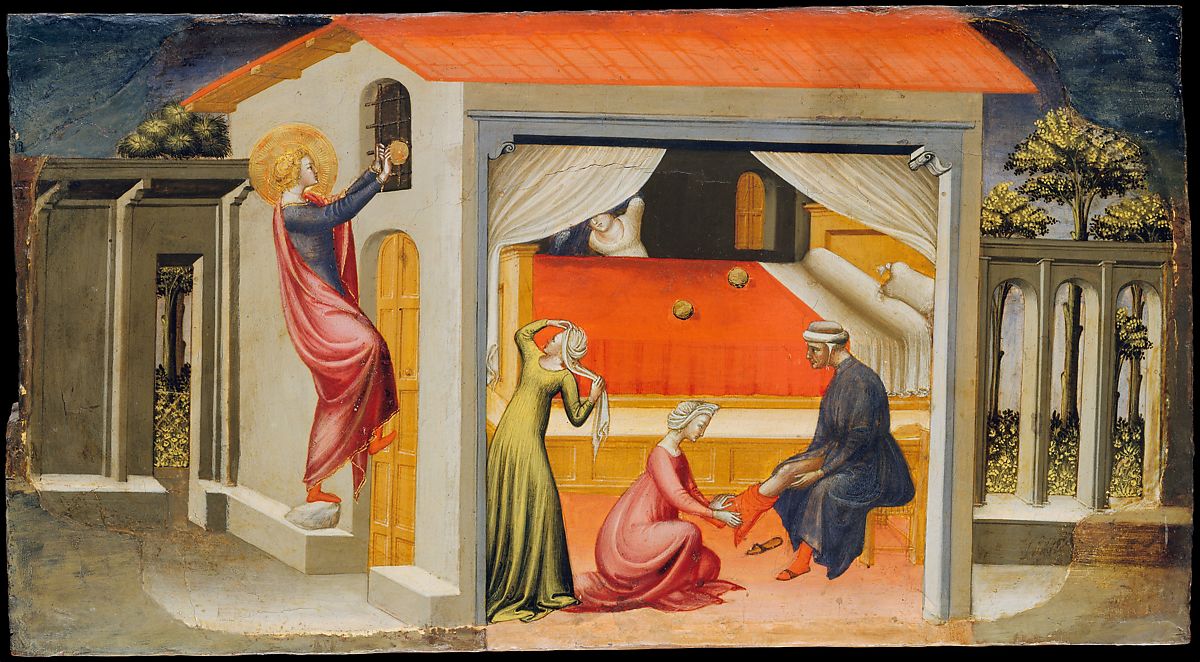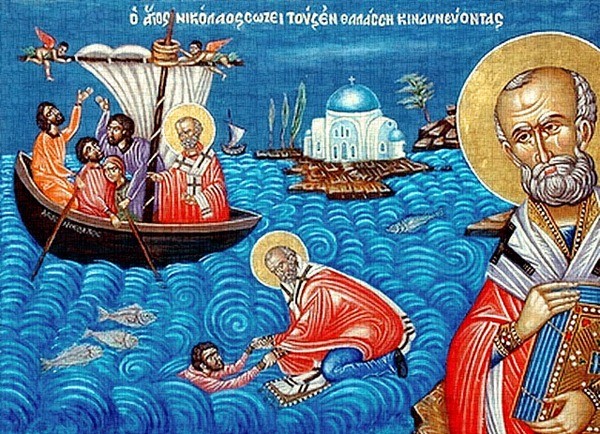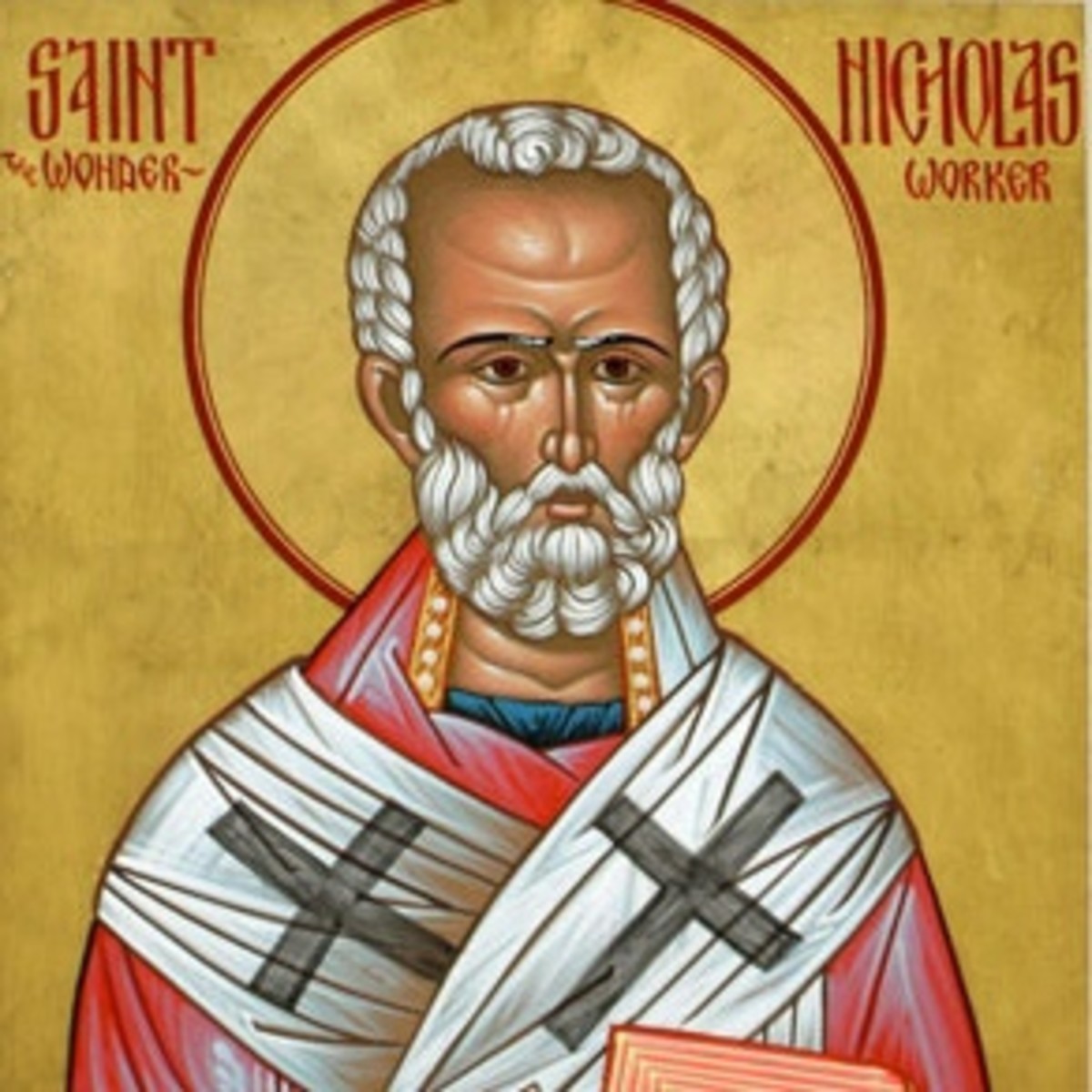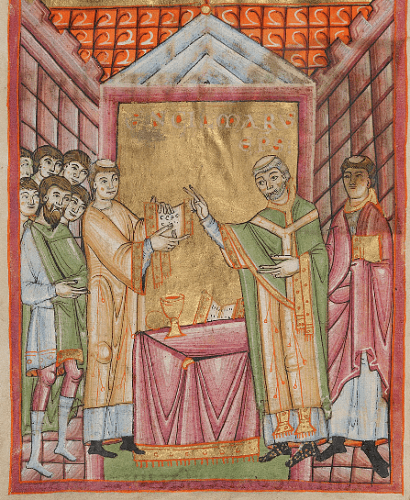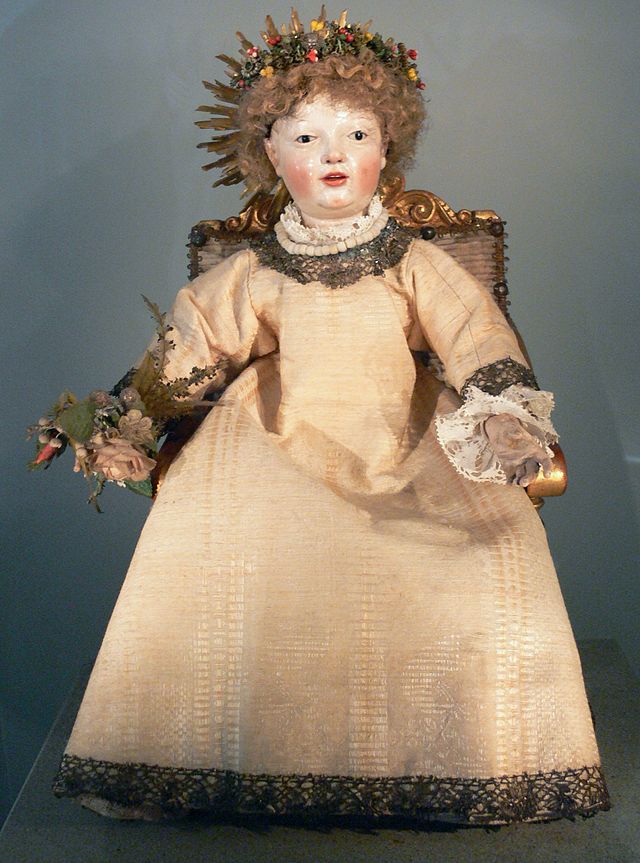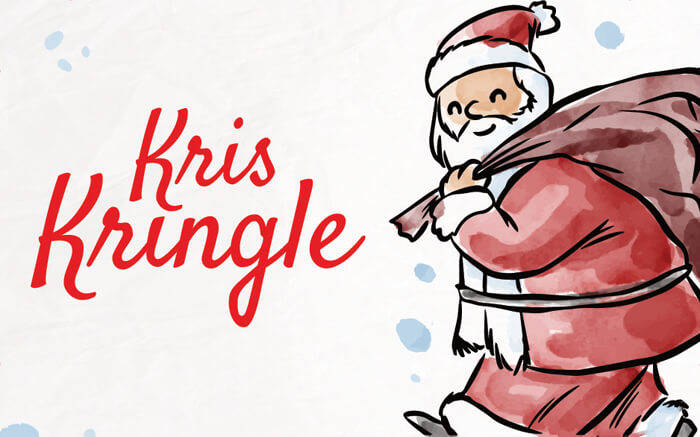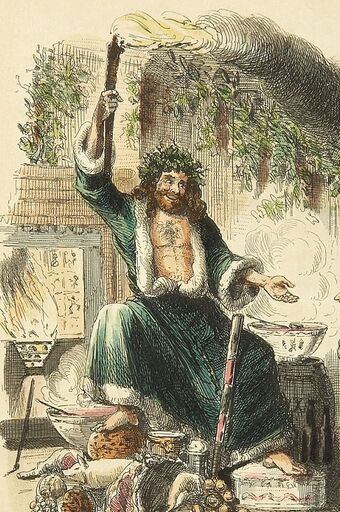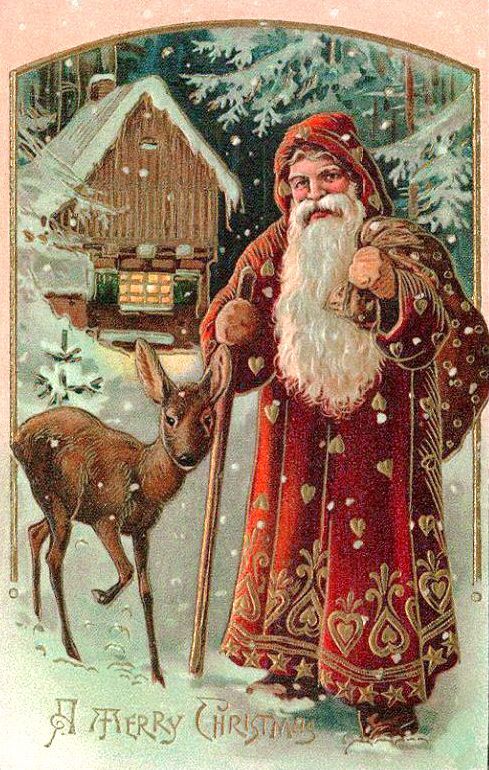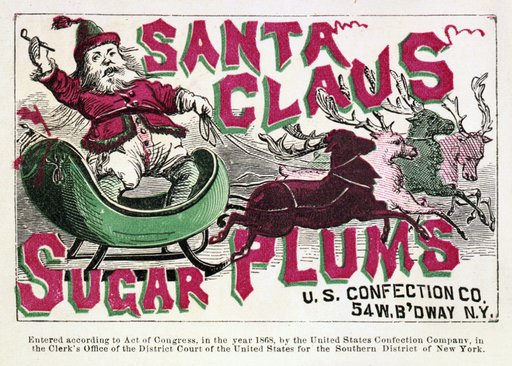The cheery fellow with a belly like a bowl full of jelly has an ancient convoluted history. As well as the sound of bells one can associate his distant past with thunderous storms at sea and the cracked screech of ravens.
Let’s go on a journey to the birth of Santa Claus! 1/
Let’s go on a journey to the birth of Santa Claus! 1/
Our first stop is around 200BCE on a cold winter’s night in what would be Denmark. A tribe of Teutons gather around a fire for the festival of ‘Jul’. A time for feasting in winter, and celebrating the Great Allfather Odin; In his festive form as Jölnir, the yule figure. 2/
Fire crackless, and hog meat sizzles. Singing and poetry fill the air. This is a festival of snow and blood. A carved figure of a man with two ravens leans against one of the simple dwellings. A young child looks at the figure’s shadow dancing in the fire light and shivers. 3/
So the origins of Christmas begin with Yule, a pagan festival itself birthed from older winter festivals based around honouring the Norse god ‘Odin’ and the cycle of life, death and renewal. The very first father of Christmas was therefore the 'Viking' god himself. 4/
The Roman’s meanwhile were spreading their empire. Our next stop takes us to Rome itself on the 17th of December 100BCE. Children run through the streets shouting ‘io Saturnalia!’ A skinny and confused looking man covered in flowers is being carried in a chair just behind. 5/
It is Saturnalia, the harvest god has been offered the soul of a gladiator who died in the arena and this man...
Normally just the local Stultus (village idiot), this man has been made King Saturn for the day. Afterwards… some say he may never be seen again… /6
Normally just the local Stultus (village idiot), this man has been made King Saturn for the day. Afterwards… some say he may never be seen again… /6
The custom of jokes, humour and party games also come from the Roman festival Saturnalia.
In a sense this confused man (possibly a sacrificial offering) is also an early Father Christmas! A silly, jolly figure given significance for just one day. 6/
In a sense this confused man (possibly a sacrificial offering) is also an early Father Christmas! A silly, jolly figure given significance for just one day. 6/
Slowly the Romans would spread a new religion, that of Christianity, to the Empire and the stories of both Odin and Saturn would mix with those of Jesus Christ.
But the old ways now deemed ‘barbaric’ would have to go, a new centrepiece would need to be found.7/
But the old ways now deemed ‘barbaric’ would have to go, a new centrepiece would need to be found.7/
Nicholas of Bari was born in Patara, on the coast of Roman controlled Turkey in 270 CE. The story goes that he overheard a man complaining that he could not afford the marriage dowries for his daughters, and would sell them into the sex trade… no... really... 8/
Nicholas hearing this, went by the house at night, and threw a bag of gold coins through their window. The daughters were then married, and catching him in the act, Nicholas was thanked for his generosity. 9/
Later Nicholas would become a beloved bishop, but was imprisoned by the Roman emperor Diocletian where he was brutally tortured.
On escaping he took a pilgrimage to the Holy land, but was caught in a terrible storm, which he was able to abate by telling the waves off! 10/
On escaping he took a pilgrimage to the Holy land, but was caught in a terrible storm, which he was able to abate by telling the waves off! 10/
One of the maddest stories relates to an evil butcher who tried to kill babies and sell them as ham. Apparently Nicholas was able to resurrect the babies who had already been cut up and pickled! 11/
For all of these reasons Nicholas was canonised after dying and was associated with helping sailors, children and giving gifts without expecting praise.
This is the first true Saint Nicholas 12/
This is the first true Saint Nicholas 12/
Many hundreds of years later, in Medieval Europe on his name day, the 6th of December, Saint Nicholas would be remembered by the giving of gifts. This over time would be moved to the 24th and 25th of December to align with Christmas. 13/
Martin Luther, a priest and theologian, thought the worship of St Nick and present giving was getting to far away from the story of Jesus Christ, thus creating ‘Christkind’ an angelic baby Jesus figure who brought the gifts instead. 14/
This name, often said 'Christkindl', is the reason modern day Santa is sometimes described as having the other name Kris Kringle in America, this is through Germanic influence. 15/
The Father Christmas concept didn’t really arise until the Tudor period. The idea of ‘The Spirit of Christmas’ as embodied in a jolly man would become a symbol. It is in 'A Christmas Carol' that the illustration of the ghost of Christmas present would cement this image. /16
Throughout the Victorian and Stuart periods these many different alter egos; Saint Nick, Father Christmas, Kris Kringle and Yule. These would become mixed together; Saint Nicholas would become 'Sinterklaas' in the Netherlands, which in turn would become Santa Claus. /17

 Read on Twitter
Read on Twitter